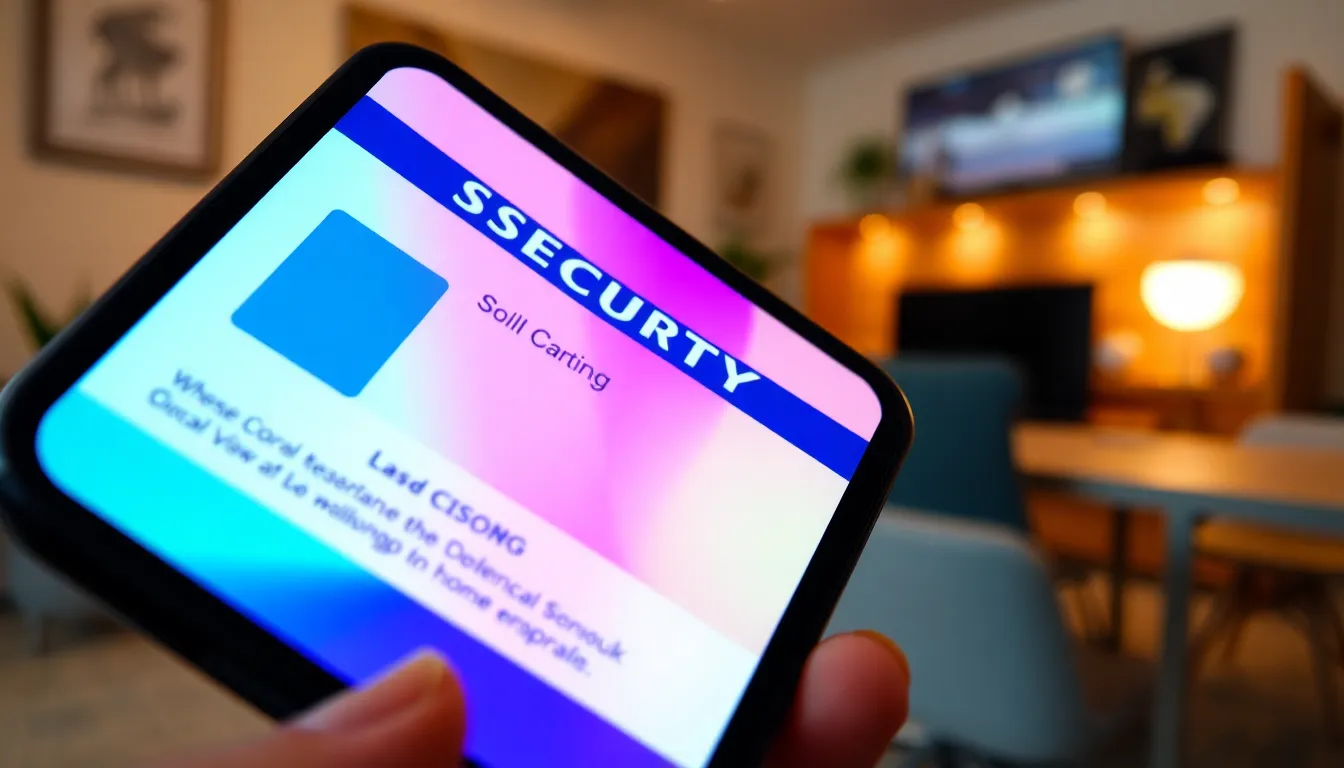Table of Contents
ToggleIn a world where everything seems to be going digital, why should your social security card be stuck in the Stone Age? Enter the digital social security card, the sleek, tech-savvy solution that’s ready to revolutionize how individuals manage their identity. Imagine having your social security information at your fingertips, accessible anytime, anywhere—no more fumbling through drawers or worrying about losing that precious piece of paper.
Overview Of Digital Social Security Cards
Digital social security cards streamline identity management for individuals in the digital age. They store crucial social security information electronically, allowing for easy access anytime and anywhere. Using secure platforms, users can retrieve their data without the concern of losing a physical card.
Having a digital card enhances security through encryption and advanced authentication measures. Users enjoy reduced risks of identity theft, as digital options require verification processes not present with traditional cards. Many services recognize digital social security cards, simplifying verification when applying for jobs or benefits.
An increasing number of states provide options for citizens to obtain digital social security cards as part of broader digital identity initiatives. These initiatives focus on modernizing government services and meeting the demands of a tech-savvy population.
Legal provisions protect the use of digital cards. Regulations explicitly stipulate that equal access should be guaranteed for all citizens, regardless of technological proficiency. Individuals can confidently use digital cards knowing their essential social security information remains private and secure.
This innovation represents a shift toward convenience, ultimately enhancing responsiveness within social security systems. Digital cards encourage efficient processes, reducing wait times and clerical errors associated with traditional cards. The enhancement in identity management provided by digital social security cards reflects necessary adaptation to contemporary societal needs.
Benefits Of Digital Social Security Cards

Digital social security cards offer numerous advantages that enhance the management of identity and personal information.
Improved Accessibility
Accessing social security information becomes significantly easier with a digital card. Individuals can retrieve their information anytime and anywhere through compatible devices. Quick access reduces the need to carry physical cards, ensuring critical data is readily available at moments of need. Many people benefit from this convenience, especially when applying for jobs or government assistance. Digital formats also allow for seamless integration into various platforms, resulting in an overall smoother user experience.
Enhanced Security Features
Enhanced security features play a pivotal role in digital social security cards. Encryption safeguards sensitive information against unauthorized access. Advanced authentication measures, such as biometric verification, add an additional layer of protection. Identity theft risks decrease substantially compared to traditional cards. With these robust security measures, individuals can manage their information confidently, knowing that their personal data is secure. Governments recognize the importance of these features and continue to invest in advanced technologies to further improve protection.
How To Obtain A Digital Social Security Card
Individuals interested in acquiring a digital social security card must meet specific eligibility criteria and follow outlined application steps. Understanding these elements ensures a smoother transition into this modern identity management system.
Eligibility Requirements
U.S. citizens or permanent residents qualify for a digital social security card. Applicants must possess a valid Social Security number before initiating the process. In addition, those seeking this card should ensure they have an email address to receive notifications. Individuals may also have to provide identification documents, such as a driver’s license or state ID, to verify their identity. Always check for any state-specific requirements, as these may vary.
Steps To Apply
Applying for a digital social security card involves several straightforward steps. First, visit the official Social Security Administration (SSA) website to access the application portal. Next, create or log into a personal account for secure access. Then, provide necessary information, including your Social Security number and identification details. After submitting the application, monitor your email for updates about your request status. Typically, receiving a digital card occurs within a few days, ensuring timely access to important information.
Potential Concerns And Limitations
Security concerns emerge regarding digital social security cards. Despite enhanced security features like encryption, individuals may worry about data breaches and cyber threats. Accessibility remains an issue for some citizens who may not possess compatible devices or reliable internet access, which can hinder their ability to utilize digital cards. Technical challenges could arise from varying levels of digital literacy among users, leading to confusion during the application process.
Privacy implications also exist. Some individuals fear unauthorized access to their personal information, making them hesitant to adopt this digital solution. Verification problems might occur when certain services do not yet recognize digital cards, resulting in frustrations during identity verification. Integration with existing systems raises concerns, as government and private entities must ensure compatibility and security to prevent unauthorized data exposure.
Dependence on technology can become a limitation. In emergency situations, individuals may find themselves without access to their digital cards if devices are lost or damaged. Legal recognition of digital cards varies by state, creating uncertainty about their use across different jurisdictions. Compliance with regulatory standards remains essential, as differing legislation could impact the effectiveness of digital identification in various contexts.
Costs associated with the implementation of digital infrastructure may also pose challenges. Governments must allocate resources for ongoing maintenance and updates, which could strain budgets. Individuals may face fees related to obtaining or replacing digital cards, creating an additional financial burden. Awareness and education campaigns are vital to addressing misconceptions surrounding digital social security cards, ensuring citizens understand their benefits and limitations.
The digital social security card represents a significant advancement in identity management. By offering convenience and enhanced security features it addresses many challenges associated with traditional physical cards. As more states adopt this technology individuals can expect streamlined processes that simplify verification and reduce the risk of identity theft.
While there are valid concerns regarding accessibility and privacy it’s crucial for citizens to stay informed about the benefits and limitations of digital cards. As awareness grows and technology continues to evolve the digital social security card could become a standard tool for managing identity in a secure and efficient manner. Embracing this innovation may ultimately lead to a more responsive and modern social security system.




